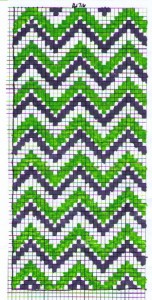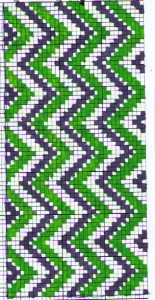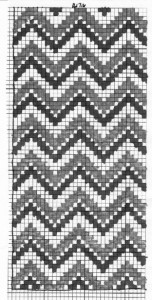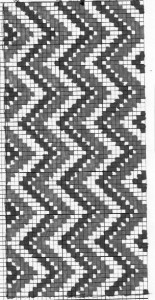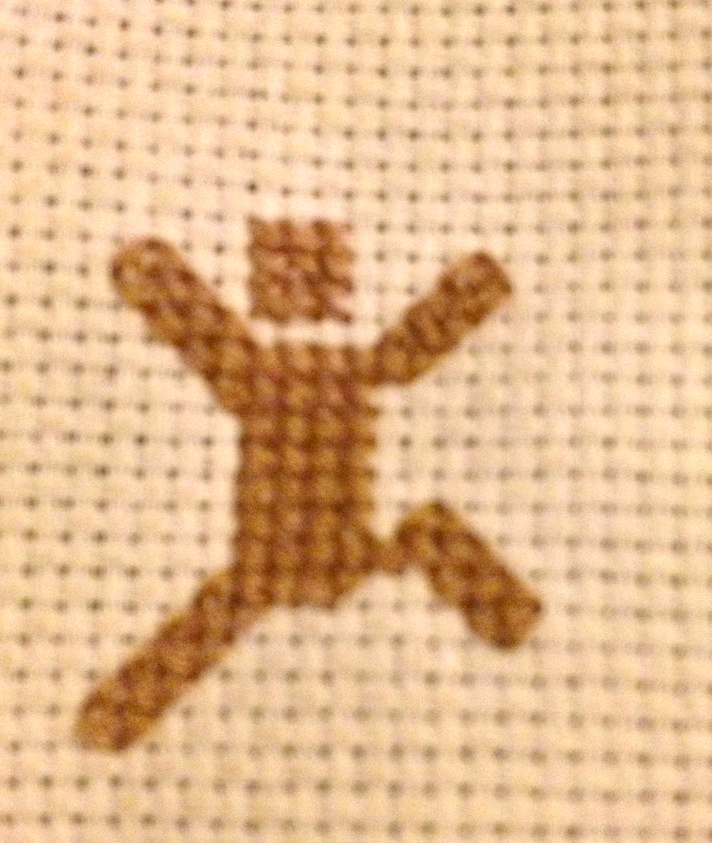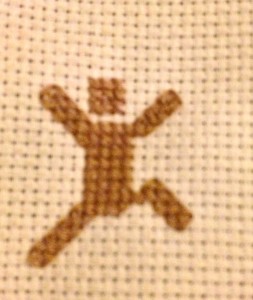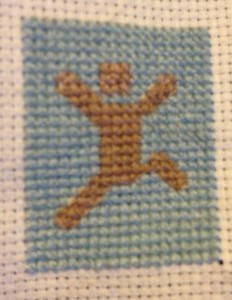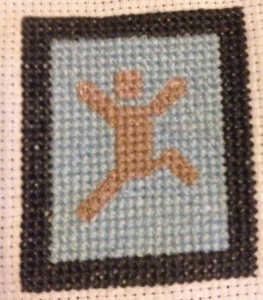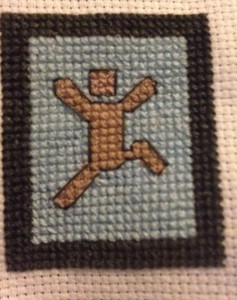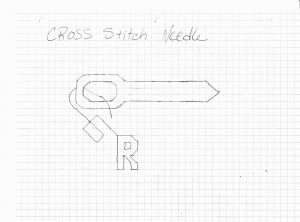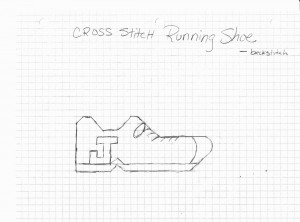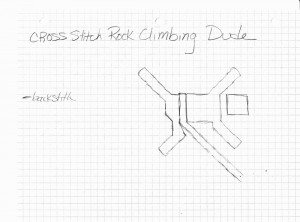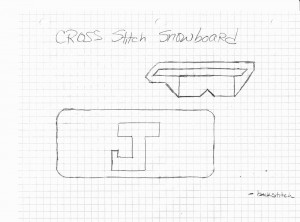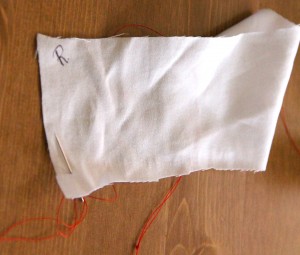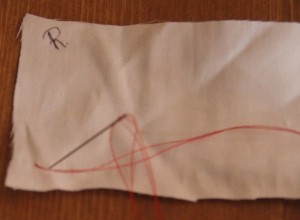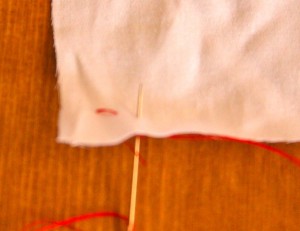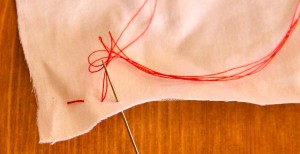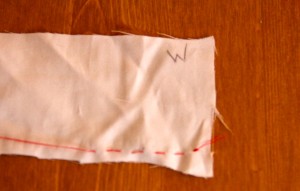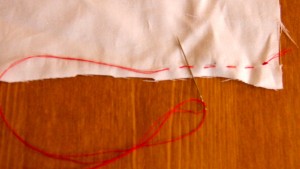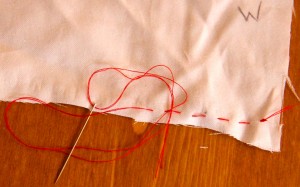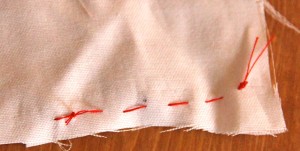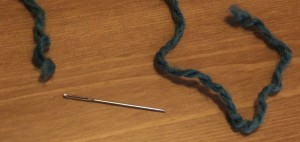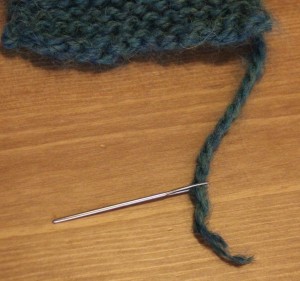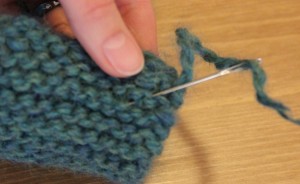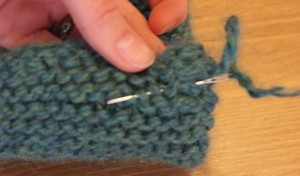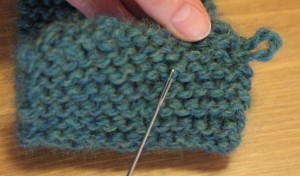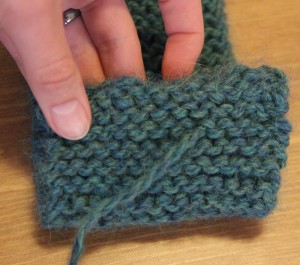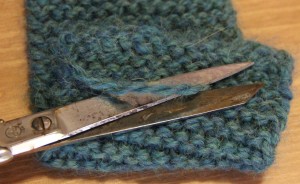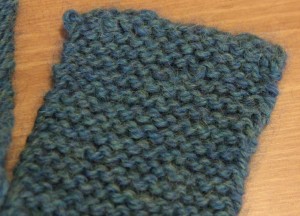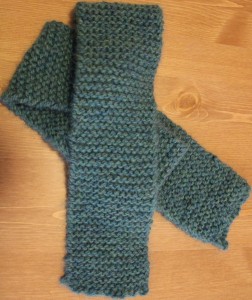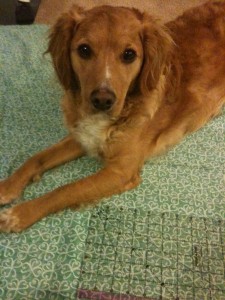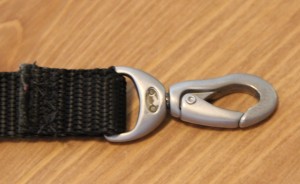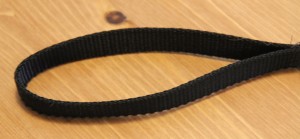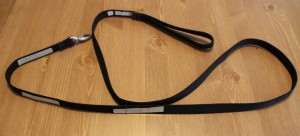 Pin It
Pin It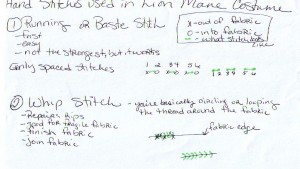
Here is my awesome drawing again! 🙂 Alright yesterday was the running stitch, and today I’ll be going over the whip stitch. It is a very versatile stitch and it is just a loop stitch. I have used it to repair holes in fabric that are not on the seam, to edge a button hole to give it strength, to combine different fabrics for sewing and knitting, and I’ve used to to combine my plastic canvas pieces for the doll workout equipment.
Reminders:
– On my fabric you’ll see a R and W written on it, this is for Right side of the fabric or the side everyone sees when the project is finished and Wrong side of fabric or the underneath part people don’t see.
– Another side note, I found out the hard way that this wasn’t the greatest fabric to do my tutorial with, it breaks and pills very easily. It’s an old pillowcase.
– For all hand stitches, use two of string only about forearm length so you aren’t tangling or doing extra unnecessary movements. Also, tie a knot at the end of the thread, sometimes more than one knot in the same place is needed so the knot doesn’t go through the fabric.
I’ll show two different types of whip stitches today, first one will be to close a rip in fabric that is not near a seam. It’s a little messy, so try to find thread that best matches the fabric.
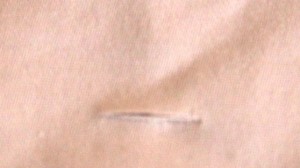
repairing a rip
Start on the wrong side of the fabric just below the beginning of the rip.
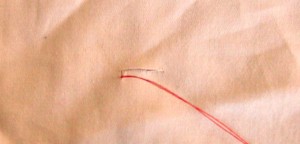
start on wrong side of fabric
Go over the rip to the top of it.
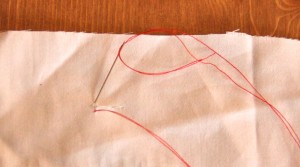
go over rip
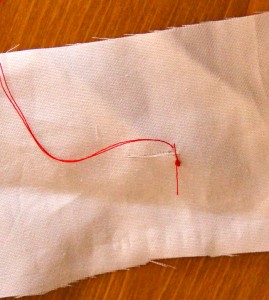
looping it around, wrong side of the fabric
I’m creating a circle with the thread and come through the right side of the fabric below the rip again.
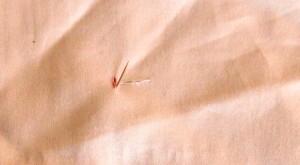
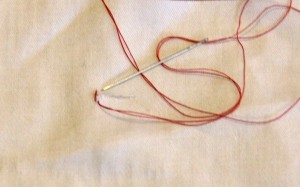
Go to the top over the rip
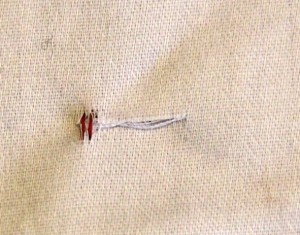
Closing the rip
The whip stitch is used to close the rip and to prevent it from getting bigger.
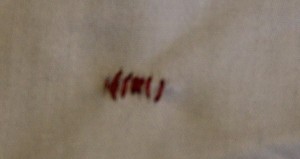
front view
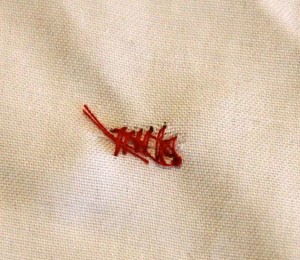
back view
This is a little bit of a messy stitch job, but my point is made. You want to get your stitches as close to each other as possible to create a lot of strength and try to keep the stitches even. When the stitching is complete tie a double knot in the thread like I did for the running stitch.
Whip Stitch number two: button hole
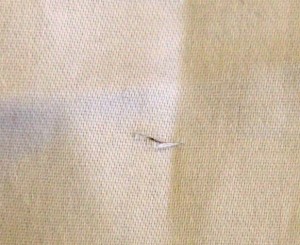
hole for whip stitch number two
After I tie the knot I go through the wrong side so the needle comes out on the right side.
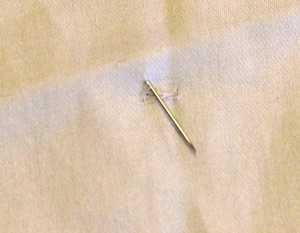
Loop around the edge
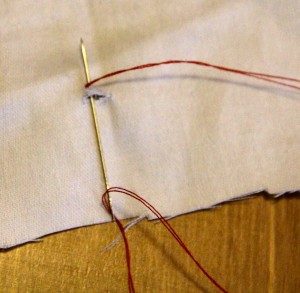
Creating a loop or circle around the hole
For this whip stitch, I only bring the needle from the wrong side to the right side because I am edging or finishing around the hole. So I am just making a circle with my thread enclosing the edges with thread.
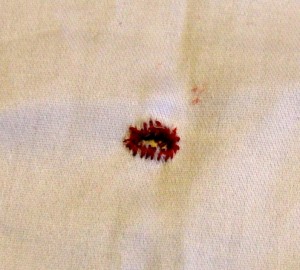
front view
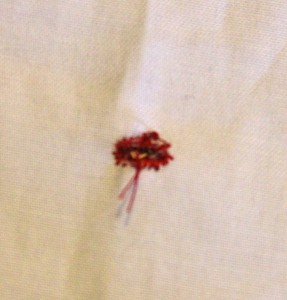
back
Once you have gone all around the hole, tie a knot.
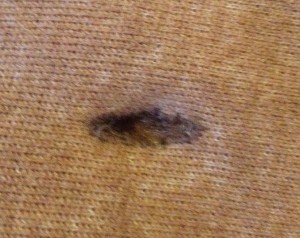
same whip stitch from Rusty’s Lion Mane Costume
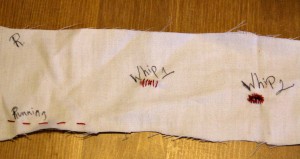
All Stitches Front View
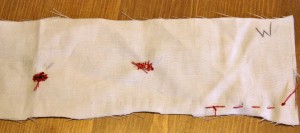
All Stiches Back View
It’s a great idea to practice these stitches before using them on a project. Also, it might be helpful to have a swatch of fabric like the one above with the labeled stitches. It is a good reminder of how to do the stitches. I like to have one anyways.
 Pin It
Pin It